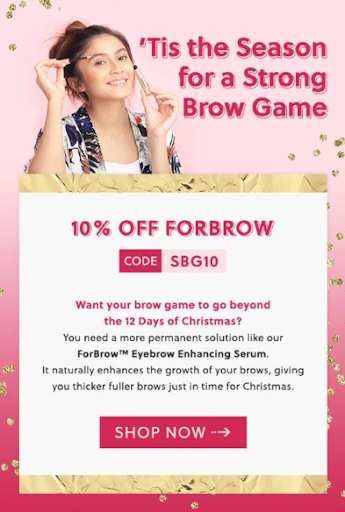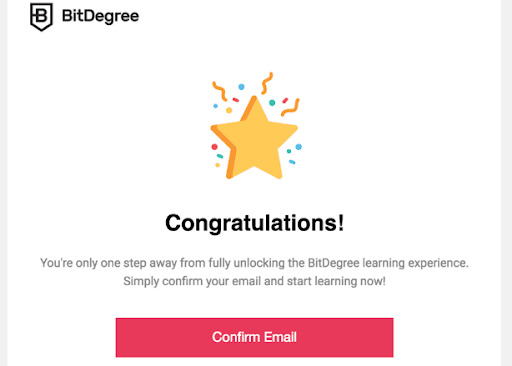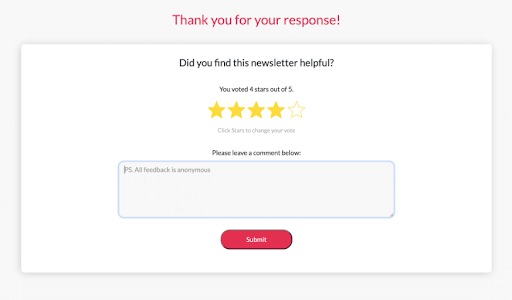Email Marketing Guide to Double Your Sales in 2024
January 25, 2024
Prashant Shukla
Summary: Boost your sales with the help of our Email Marketing Guide. Elevate your email game with hyper-personalization, interactive elements, omnichannel integration, and much more.
Did you know that 60% of shoppers not only show interest but make a purchase after getting a marketing email? A good news for brands and marketers, right?
As a premium digital marketing agency, we understand the importance of emails for building valuable connections with the audience.
Our mission is straightforward: to teach marketers how to boost sales using email marketing. You can use this comprehensive guide to start your transformative journey.
What is Email Marketing?
Email marketing is like sending letters to friends. Instead of paper and a mailbox, businesses use emails to share things with potential customers.
Through emails, you can tell about new products, special deals, or just update on what’s happening in your business. It’s a productive way to stay connected and share useful or exciting stuff right in the mail inbox.
Importance of Email Marketing in Terms of ROI
The significance of email marketing becomes even more apparent when considering its Return on Investment (ROI). Insights For Professionals reveals that email marketing boasts an extraordinary ROI of 4400%. Isn’t it impressive?
The impact of email marketing on generating value for businesses is incredibly high, making it a cost-efficient and cost-effective strategy.
Types of Email Marketing That Every Marketer Should Know of
1. Promotional Emails
Promotional emails are the type of emails that serve the primary purpose of driving sales. You can promote specific products, services, or exclusive offers.
The content of these types of emails is specifically written to share discounts, special promotions, or allow free trials of new products. The objective of these emails is clear – to entice recipients into making a purchase.

If you’re a retail company, you can send a promotional email showcasing a limited-time discount on a popular product or announcing the launch of a new collection. In the example above, you can see, that a promotional code is being shared as a Christmas offer. This not only encourages recipients to take advantage of the offer but also to purchase within a time limit.
2. Newsletter Emails
Newsletter emails are more business-oriented as they update subscribers with industry news and relevant company updates.
The content of these emails is composed of articles or blog posts of the month, event announcements, or any other information that adds value and keeps subscribers well-informed about the brand.

Image source: The lead magnate
These emails aim to foster a sense of connection and engagement with the audience, providing them with regular insights into a company’s activities, industry trends, and other content that aligns with their interests.
We are a digital marketing agency. We also send a monthly newsletter to our followers featuring the latest industry trends, updates on our services, and highlights from recent events attended by our CEO, ensuring subscribers stay engaged and informed about our work.
3. Transactional Emails
Transactional emails are messages automatically sent to users based on specific actions, like purchasing.
The primary purpose of these emails is to provide essential information related to the transaction. The content typically includes crucial details such as order confirmations, shipping notifications, and, if applicable, instructions for the next steps in the customer journey.

Image source: BitDegree
In the image above you can see an example of transactional email. Transactional emails are designed to keep customers informed about their interactions with a business. This further ensures transparency and provides the necessary details for a smooth and satisfying transaction experience.
4. Welcome Emails
Welcome emails are messages sent to individuals who have newly subscribed to your email list. Serving the purpose of extending a warm welcome from the brand.
The content of these emails generally includes a friendly greeting, a brief overview of the company, and sometimes, a special incentive or discount to encourage further engagement.
Essentially, welcome emails aim to make new subscribers feel valued and provide them with an initial positive impression of your brand. Fostering a connection and encouraging ongoing interaction.
5. Abandoned Cart Emails
Abandoned Cart Emails are a crucial component of e-commerce strategies. This type of email aims to re-engage potential customers who have shown interest in a product but haven’t completed the purchase process.
These emails target users who have added items to their online shopping cart but, for various reasons, have not gone through with the transaction.

Image source: MYER FIT
The content of Abandoned Cart Emails typically focuses on reminding users about the specific items they left in their virtual shopping carts.
This reminder serves to rekindle their interest in the products and encourages them to reconsider completing the purchase. To further incentivize these users, businesses often include special offers, such as discounts or free shipping, as a way to sweeten the deal and motivate the customer to finalize their transaction.
6. Re-engagement Emails
Re-engagement emails are an important type of email in the realm of digital marketing. The objective of these emails is to target subscribers who have become inactive. Meaning they haven’t interacted with your brand’s emails, products, or services in a long time.
Through these emails, brands can inspire and encourage inactive subscribers to re-establish a connection with the brand once again.

Image source: LOWE’S
Another content strategy involves sharing updates on product improvements or introducing new features. This approach communicates to inactive subscribers that your brand is dynamic, evolving, and continuously enhancing its offerings. By showcasing these improvements, businesses aim to reignite curiosity and highlight reasons for subscribers to explore what’s new.
7. Survey Emails
This email is to gather valuable feedback from subscribers, aiming to understand their preferences and opinions.

By engaging subscribers in the feedback process, businesses can gain insights that are instrumental in refining and improving their products or services. This feedback-driven approach can help you align offerings more closely with the needs and expectations of the customer base.
Survey emails typically contain links to online surveys where subscribers can provide their feedback. These surveys may cover a range of topics, including product experiences, customer service interactions, or overall satisfaction with the brand.
8. Educational Emails
Brands use educational emails to offer subscribers valuable information, tips, or tutorials that are relevant to their industry or products.
The content showcases expertise in the field and is designed to genuinely provide information to the audience. Valuable insights and knowledge can be shared to contribute to building a relationship of trust and credibility with your subscribers.
That’s it.
These are the broad types of email marketing campaigns that allow businesses to tailor their communication strategies to different goals and audiences. You have to choose the best according to your business requirements, enhancing overall engagement and conversion rates.
Email Marketing Checklist For a Strong Start
Now that you have an idea of what type of email marketing will work for your business, follow the below checklist to start your email marketing journey.
- Target Audience: Identify and understand your target audience. Define their demographics, interests, and pain points. This step is extremely crucial because you’ve to tailor your email content to address their needs and preferences.
- Goals & Objectives: Outline the specific goals and objectives you aim to achieve through your email marketing efforts. Whether it’s boosting sales, improving conversion rates, or enhancing brand awareness, having well-defined goals will guide your strategies better and measure success rate.
- List Building & Segmentation: The next step is to develop strategies to organically grow your email list, ensuring quality subscribers who are genuinely interested in your content. Implement segmentation based on demographics, behavior, or preferences to send targeted and relevant messages. Remember, quality subscribers over quantity.
- Email Design & Branding: You have to create visually appealing emails that align with your brand identity. Use a consistent color scheme, logo placement, and typography. Also, ensure mobile responsiveness for a seamless user experience. Try Canva, for compelling visuals and concise formatting to capture attention.
- Deliverability & Compliance: Pay close attention to deliverability factors to ensure your emails reach recipients’ inboxes. Implement best practices such as using double opt-ins, maintaining a clean email list, and avoiding spam triggers. Additionally, adhere to email marketing regulations, such as GDPR and CAN-SPAM, to maintain compliance and build trust with your audience.
By following this comprehensive checklist, you lay a solid foundation for your email marketing strategy.
Crafting Compelling Content for Email Marketing
The most important part of an email marketing strategy is content. Let me explain to you the step-by-step process to craft content that sells.
1. Personalized Storytelling
Imagine you’re a fitness brand and targeting subscribers interested in a healthier lifestyle. Instead of a generic email, craft a personalized story about a fictional character’s fitness journey, mirroring the challenges your audience may face.
For instance, share the story of “Alex,” a busy professional who transformed their fitness routine. This narrative resonates emotionally, making your brand relatable and inspiring action.
2. Value-Driven Content
Your email content should not just be hard sell but also educate and entertain.
In the fitness brand, send out a monthly newsletter featuring workout tips, healthy recipes, and success stories. By providing valuable, relevant content beyond promotional material, you position your brand as an authority, fostering trust and loyalty among subscribers.
3. Offer-Centric Campaigns
Crafting irresistible offers is essential. Consider a limited-time promotion on personalized fitness plans or exclusive access to a new workout app.
By tailoring the offer to your audience’s needs and preferences, you create a sense of exclusivity and urgency, compelling them to take immediate action and engage with your brand.
4. Call to Action (CTA) Optimization
Ensure your CTAs are clear, concise, and compelling.
In your email, use phrases like “Start Your Transformation Today” or “Unlock Exclusive Workouts.” These CTAs are action-oriented, creating a sense of urgency and guiding subscribers toward the desired action, whether it’s signing up for a program or exploring new content on your website.
5. Create an email
| Hey [Name],
Remember that New Year’s resolution about getting in shape? We’re here to help you crush it (without the crushing effort) with our game-changing new product: the [Product Name]!
Imagine this:
- Effortless workouts: Ditch the gym and ditch the excuses. The [Product Name] brings the studio-quality training straight to your living room, on your schedule.
- Results in record time: Our cutting-edge technology uses AI to adapt to your fitness level and goals, maximizing your workout efficiency. No more plateaus, just progress you can see and feel in weeks, not months.
- Fun that keeps you coming back: Forget boring routines! The [Product Name] offers a variety of interactive workouts, from high-intensity HIIT to calming yoga, all led by motivating virtual coaches.
- Smart technology that inspires: Track your progress in real-time, compete with friends on the leaderboard, and unlock new challenges to keep you motivated.
But wait, there’s more! For a limited time, pre-order your [Product Name] and get:
- Free access to our premium workout library
- A bonus accessory pack
- Exclusive entry to our fitness challenge
Don’t miss out on this chance to transform your fitness journey!
Click the link below to pre-order your [Product Name] and unlock the door to a healthier, happier you.
Best Regards
The [Your Brand Name] Team |
6. Advanced Strategies for Sales Growth
1. Hyper-Personalization
Gone are those days when one emailer was enough for the entire database. Today, personalization is about utilizing advanced techniques to tailor emails to individual needs.
This includes dynamic content that changes based on user behavior or preferences. Brands can use AI personalization algorithms to analyze data, understand customer behavior, and deliver highly personalized content, offers, and recommendations.

Image source: Netflix
One successful example of hyper-personalization is Netflix’s email marketing. It employs hyper-personalization using AI algorithms to analyze user viewing history and preferences. Based on users’ previous watch, it recommends shows and series based on individual user behavior, creating a personalized experience that keeps subscribers engaged and encourages continued usage.
2. Interactive Elements
Incorporating interactive elements into email campaigns adds a dynamic and engaging dimension.

Image source: Non profit
Features such as quizzes, polls, and videos encourage subscriber participation, making the content more memorable and shareable. Interactive elements capture attention and provide valuable insights into customer preferences and behaviors.
This can lead to higher conversion rates as interactive content fosters a sense of involvement, making subscribers more likely to take desired actions.
3. A/B Testing & Data Analysis
A/B testing is a common practice to know about the effectiveness of a campaign. This practice involves comparing two versions of an email to determine which performs better. It’s crucial for optimizing elements like subject lines, copy, and visuals.

Image source: Omnisend
Data analysis goes hand-in-hand with A/B testing, allowing marketers to draw actionable insights from campaign performance metrics. Regularly analyzing data helps refine email strategies based on subscriber behavior, improving open rates, click-through rates, and ultimately, sales conversions.
4. Advanced Segmentation
Advanced segmentation goes beyond basic demographic data, utilizing sophisticated data analytics to create highly targeted segments.
By segmenting subscribers based on granular insights, marketers can deliver hyper-personalized messages tailored to specific customer needs and preferences.

Myntra uses advanced segmentation by considering both purchase history and browsing behavior. Subscribers are segmented based on preferred beauty products, brands, and shopping frequency. This allows Myntra to send targeted emails featuring new products or personalized promotions, increasing the likelihood of conversion.
This targeted approach increases the relevance of marketing communications, fostering stronger connections and driving higher conversion rates.
5. Omnichannel Integration
Omnichannel integration involves seamlessly connecting email marketing with other channels like social media and SMS to create a cohesive customer experience.
Everyone knows Starbucks’s review system. Starbucks seamlessly integrates email marketing with its mobile app and social media channels. When a customer receives an email about a new beverage, they may also see related promotions on the Starbucks app or social media platforms. This cohesive approach ensures that customers encounter consistent messaging across various channels, reinforcing brand loyalty and encouraging sales.
Integrating channels allows for a unified customer journey, where interactions in one channel complement and enhance those in another.
Common Challenges in Email Marketing Brands Need to Take Care of
1. Low Open Rates
Low open rates are often a result of subscribers not being enticed to open the email. This can be due to unappealing subject lines that fail to grab attention, content that doesn’t resonate with the audience, or emails being sent at times when recipients are less likely to engage.
Crafting compelling subject lines that evoke curiosity or urgency can significantly improve open rates. Personalizing content based on subscriber preferences ensures relevance. Additionally, conducting A/B testing for different send times helps identify the optimal times for your audience.
2. Poor Deliverability
Poor deliverability occurs when emails land in spam folders, have a high number of bounced addresses, or when the sender is flagged by email service providers as potentially malicious or irrelevant.
Ensuring valuable and relevant content reduces the likelihood of emails being marked as spam. Regularly cleaning the subscriber list by removing inactive or invalid addresses helps maintain a positive sender reputation. Implementing authentication protocols such as DKIM (DomainKeys Identified Mail) and SPF (Sender Policy Framework) establishes trust with email service providers.
3. Unsubscribe Issues
High unsubscribe rates can be a result of sending emails too frequently, providing content that is not aligned with subscriber preferences, or having a complicated and discouraging unsubscribe process.
Setting clear expectations on email frequency during the subscription process helps manage subscriber preferences. Providing valuable content that aligns with the audience’s interests reduces the likelihood of unsubscribes. Making the unsubscribe process straightforward and including preference centers where subscribers can tailor their content preferences can also mitigate unsubscribe issues.
It’s pretty common to get hiccups while trying something new. Therefore, always better care of these things and do a regular audit of your marketing activities.
Final Thoughts on Email Marketing
We hope this guide helped you master advanced email marketing strategies to unlock unprecedented sales growth in 2024.
By embracing hyper-personalization, interactive elements, data-driven testing, and seamless omnichannel integration, businesses can forge deeper connections with their audience.
With Techmagnate’s expertise in email marketing, leverage the insights shared in this guide, and propel your email campaigns toward doubling sales.
Contact us today for a personalized email consultation.